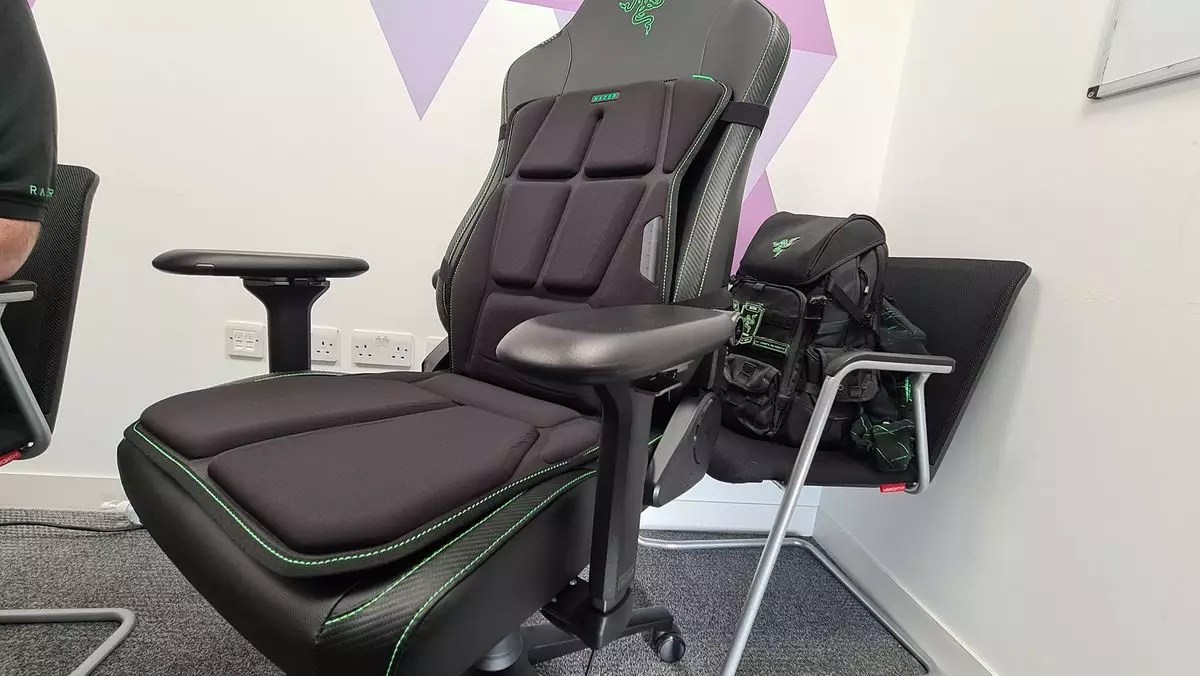The recent launch of Razer’s innovative gaming device, the Freya, has started a wave of excitement in the gaming community. This distinctive gaming cushion, which can be fitted onto any standard chair, aims to amplify the immersive experience of gaming through tactile feedback. Designed to translate game actions and sounds into physical vibrations, the Freya boasts six padded regions equipped with embedded motors that promise to adjust in sync with the dynamic elements of gameplay. But while this product claims to enhance engagement, it begs the question: does it truly deliver on its promises?
The Freya operates on a straightforward principle: by adding physical sensations to the auditory and visual stimuli present in games, it seeks to create a deeper level of connectivity with the gaming narrative. The cushion can be upgraded through a user-friendly Razer Synapse 4 app that allows users to customize the intensity of vibrations. Designed to work seamlessly with various games—such as *Final Fantasy XVI*, *Hogwarts Legacy*, and upcoming titles like Silent Hill—the Freya also features an Unreal Engine 5 plugin that could make game integration simpler for developers. However, one might consider the reliance on game developers to spark adoption and the potential future landscape of VR and AR where similar devices could thrive.
During a hands-on session at Razercon, I had the chance to strap the Freya onto a Razer gaming chair and immerse myself in gameplay. My experience began with *Final Fantasy XVI*, where the cushion vibrated in response to in-game actions. It was a fascinating endeavor—each magical attack and physical blow came with a unique pattern of vibrations, creating a feedback loop that matched my actions. However, I found that after a while, the novelty wore off, and the intricate feedback became fuzzy, stressing the importance of variety in haptic feedback over extended gameplay sessions. Initially captivating, the sensation soon risks becoming uniform, somewhat dulling the sheer breadth of a game’s experience.
While my foray into casual gaming with the Freya was intriguing, I couldn’t help but consider its practical applications, particularly in the realm of simulation racing. The cushion could present a myriad of immersive opportunities when combined with high-quality racing equipment, delivering more grounded responses without the hefty investment in full-motion rigs. The idea of integrating it into a setup with a Playseat or racing wheel has merit, possibly elevating the experience without straining one’s wallet. While it may not replicate a fully actuated sim rig, it provides intermediate tactile stimulation that has the potential to augment driving simulations.
Despite its unique concept, the Freya left me pondering the overall value proposition, especially with a price tag of $300. Even when set to music mode and generating bass-tuned vibrations through tracks by Chase & Status and Stormzy, the results felt underwhelming. Given my usual enjoyment of bass-heavy music, the experience felt more overwhelming than immersive. Adding the Razer Kraken V4 Pro headset into the mix didn’t significantly enhance my enjoyment—rather, it reminded me of uncomfortable proximity to the speakers at a particularly loud concert.
Additionally, one has to contemplate whether the Freya truly caters to a wide audience or if it primarily appeals to a niche segment of gamers. Casual enthusiasts seeking affordable ways to deepen their gaming experience may balk at the price, even as more dedicated gamers may find themselves questioning whether the Freya can meaningfully transform their play sessions.
The Razer Freya undoubtedly presents an innovative approach to haptic feedback in gaming. It taps into the growing market of immersive technologies and showcases Razer’s continuous efforts to enhance the gaming environment. Nevertheless, while it holds promise, its ability to establish a lasting impact remains in question. The device may resonate strongly with those invested in sim racing or haptic experiences, yet many may find it difficult to justify its cost. Moving forward, it will be fascinating to observe how developers integrate this technology into games and if consumer responses evolve as more robust titles begin to emerge within its embrace. The concept of haptic gaming cushions may have taken flight, but whether it will take root in gaming homes remains to be seen.


Leave a Reply